I love puffins. Before my trip to Washington the only species of puffin I had ever seen in the wild was the puffin of the 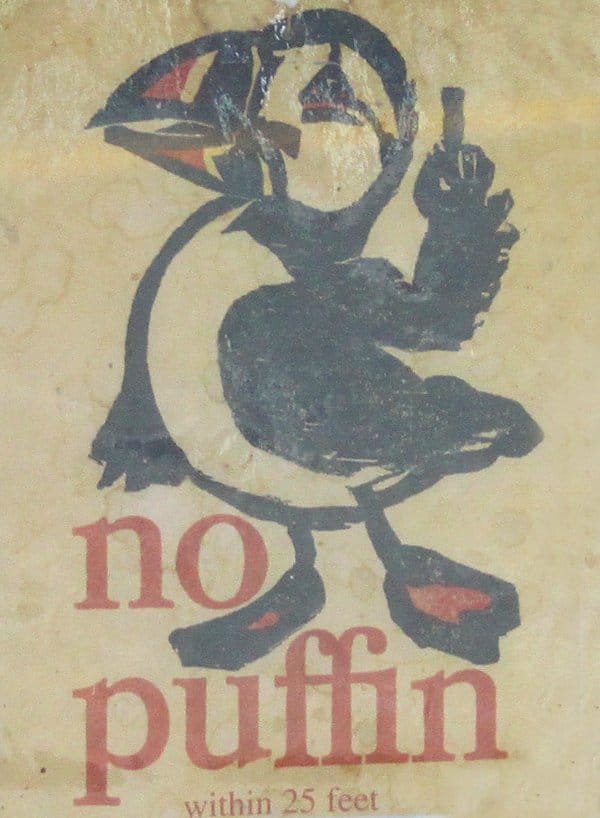 Atlantic Ocean, the appropriately named Atlantic Puffin. I had high hopes, however, of adding Tufted Puffin to my life list provided I could overcome a series of seemingly insurmountable obstacles to accomplish this near impossible goal. What were these obstacles and did I surmount them? Read on, dear reader, and you will be sure to find out!
Atlantic Ocean, the appropriately named Atlantic Puffin. I had high hopes, however, of adding Tufted Puffin to my life list provided I could overcome a series of seemingly insurmountable obstacles to accomplish this near impossible goal. What were these obstacles and did I surmount them? Read on, dear reader, and you will be sure to find out!
The first obstacle was getting to the general range of the species, which is the west coast from northern California to Alaska and across to Russia.* Having flown to Washington State on a family vacation the first obstacle was easily out of the way, which you knew already if you ever read this blog. The second obstacle was to find a specific location where Fratercula cirrhata is regularly seen. I discovered that they nest on Protection Island, which is off the northeastern coast of the Olympic Peninsula, just west of Port Townsend, in the Juan de Fuca Strait near where it meets Puget Sound. But how to get there? This third obstacle seemed impossible to overcome until I discovered that the Port Townsend Marine Science Center hosts Puffin Cruises aboard the 65′ Glacier Spirit, owned and operated by Puget Sound Express. At $55 a head, and free for toddler Desi, the chance to see puffins from a comfortable boat seemed too good to ignore. But then came the biggest obstacle of all…
…would Daisy agree to a boat ride that had a bird as its goal? There was no pretending this was a whale-watching trip, a ruse that is growing stale anyway. I broached the topic tentatively, carefully, “Honey, how do you feel about doing a short boat ride while we are out west? You know, so we could see some really cool puffins?”
I set myself for the harsh rejection, the scorn, the thrown objects. Instead I heard “Sure, that sounds like fun. It’s not too expensive, is it?”
Maybe this Daisy character that I live with and who is mother to Desi is not the mean ol’ bird-hater that I have made her out to be. Could it be that she, too, wanted to see a puffin? The head reels and the heart beats a little faster at the very idea…
a Rhinocerous Auklet we saw from a pier in Port Townsend
Anyway, this explains why the three of us were on a dock in Port Townsend at shortly before 6 PM on a Saturday evening with a host of other folks waiting to board the Glacier Spirit and get out onto the water. Desi, of course, had decided that 5:30 was his nap time so he was unconscious and in Daisy’s arms, a place she was happy to keep him in the warm cabin on the fast ride out to the island while I prowled the dock, braving the wind and enjoying the birds, the water, and did I mention the birds?
Pelagic Cormorant Phalacrocorax pelagicus
Rhinoceros Auklets Cerorhinca monocerata
a small and mostly gull-based feeding frenzy
approaching Protection Island
Once we arrived at Protection Island, or, rather, just off Protection Island, which is a 379-acre National Wildlife Refuge that boats are not allowed to approach closer than two hundred yards, Desi awakened, and he and Daisy came out on the deck to enjoy the view. And quite a view it was! Bald Eagles competed with hauled out Harbor Seals for our attention and we were told that the concentration of eagles was due to the salmon not yet running in the rivers. Once the salmon started heading upstream the eagles would disperse and go after them. We didn’t mind their presence at all and the tally for the trip was thirty-one eagles!
at least one Bald Eagle is required by law to sit on this sign for an hour every day
young Bald Eagle Haliaeetus leucocephalus
While waiting for the salmon to spawn the eagles have an easy life, occasionally raiding the gull colony for fat young birds, and otherwise loafing on and around the island. Nice work if you can get it. It was amazing to see the ruckus a single eagle could create by overflying the gull colony.
As we made our way around the island in a clockwise direction we continually saw large numbers of Rhinoceros Auklets, which are so clumsy on land that they must wait for the cover of darkness to get back to their burrows to feed their young. There were also smaller numbers of Pigeon Guillemots. But the alcid we all wanted to see was being elusive. Until it wasn’t. As the cry of “Puffin!” went up the excitement level on the boat palpably went up a notch as everyone tried to get a look. Fortunately, the bird cooperated, first sitting on the water until everyone could see it and then taking off and flying around for what felt like an eternity but was probably only a couple of minutes. It even made one very close pass by the boat, within twenty yards, but I managed to butcher the photographic opportunity so you will have to make do with these two shots, the best I got of any of the six Tufted Puffins we totalled.
Tufted Puffin Fratercula cirrhata
Tufted Puffins are, judging by Daisy’s careful tracking of the bird in flight and Desi’s “Whoa!” when the puffin flew past, a bird that the whole family can appreciate. And after the puffins the rest of the trip was rather anticlimactic though I kept a sharp eye out for (pretty unlikely) Ancient Murrelets and (more likely but still unlikely) Marbled Murrelets. Neither showed but I did tally a couple Common Murres, and, even better, we all enjoyed some breathtaking views of the island with evening light working its magic.
Protection Island and Mt. Baker
Pelagic Cormorant colony on Protection Island
Of course we saw more birds but as the light weakened it became difficult to get quality pictures. We did track our final puffin until it actually landed high up on the side of the island by its burrow, which was pretty neat. But then the sunset kind of took precedence, because it was amazing.
a juvenile gull that I am too lazy to figure out so we will call it a quiz picture
sunsets are pretty
A Caspian Tern was our last new bird of the day as the boat turned and started to steam back to Port Townsend. Watching the hordes of Rhinoceros Auklets gather and await full darkness before returning to their burrows to feed their young was a nice way to spend the ride back, especially as it led to the aforementioned sighting of Common Murres.
Rhinoceros Auklets
Common Murres Uria aalge with Rhinoceros Auklets
As we neared Port Townsend Harbor and prepared for our long ride back to the Bainbridge Ferry we all agreed that it had been a heck of a trip and well worth the time and money. Would we do it again? In a heartbeat!
Point Wilson Lighthouse at dusk
* They have nested in the past in the Channel Islands off southern California but not for at least fifteen years.
…


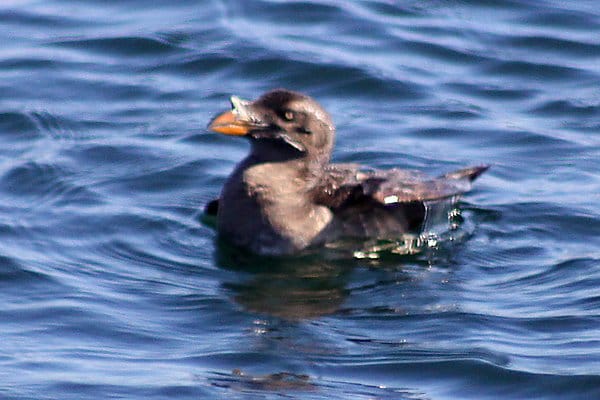
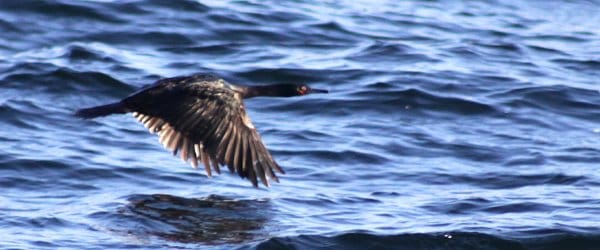
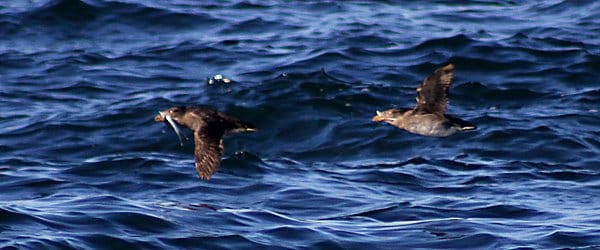
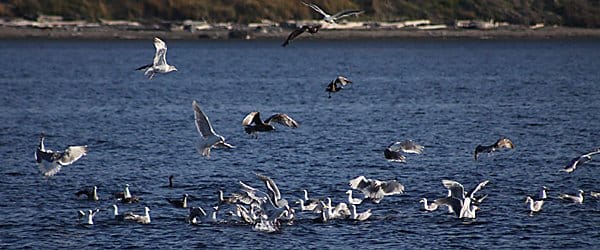
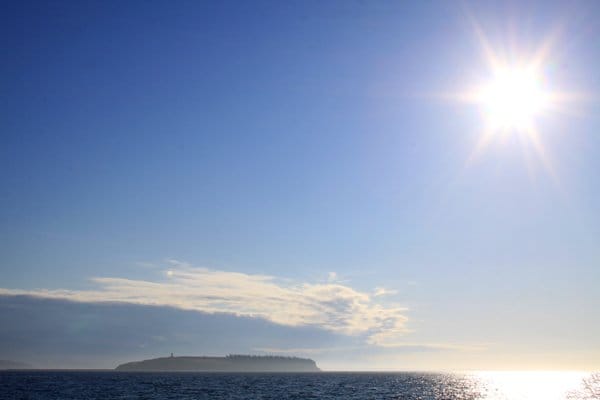
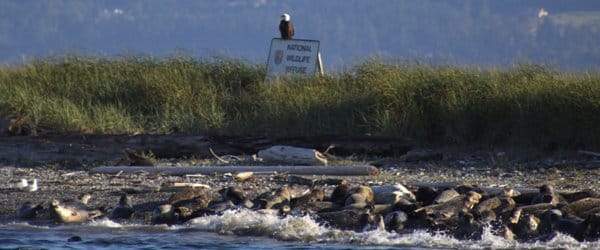
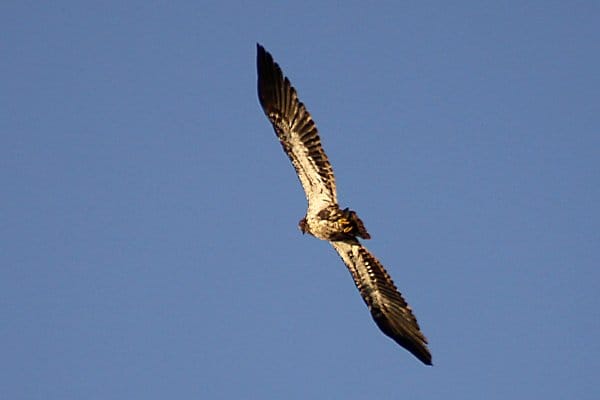
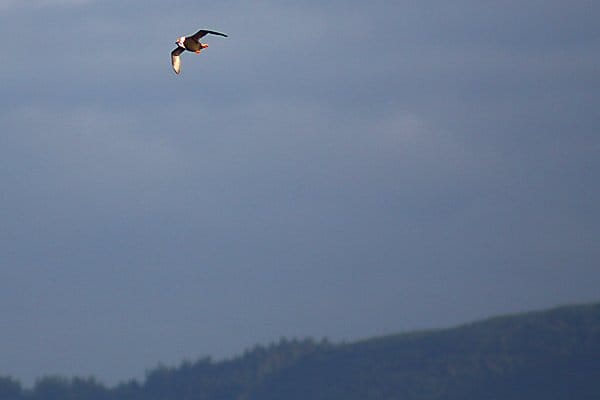
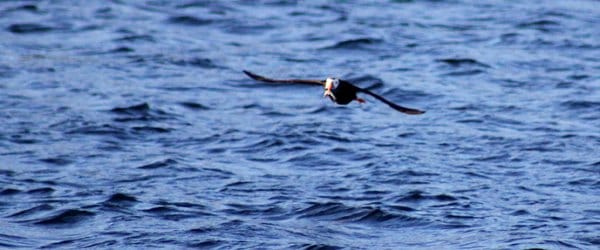
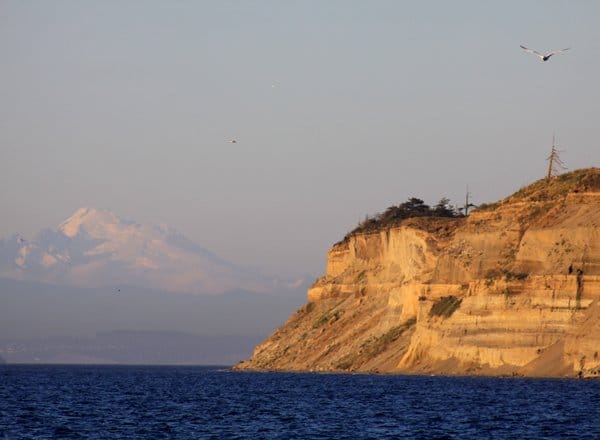
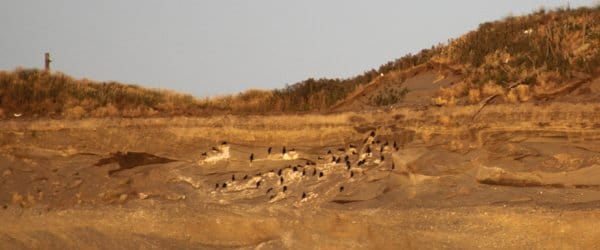
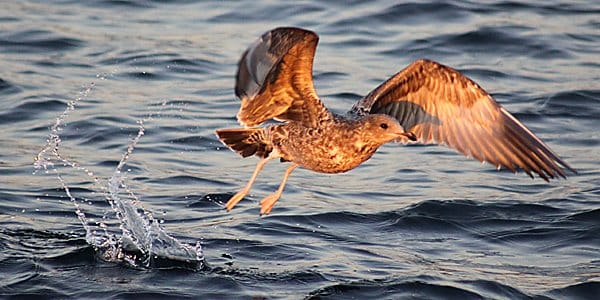
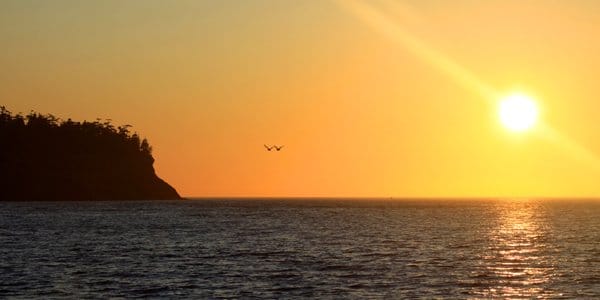
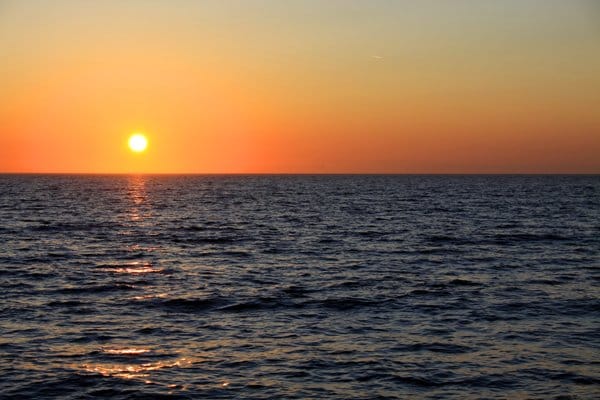
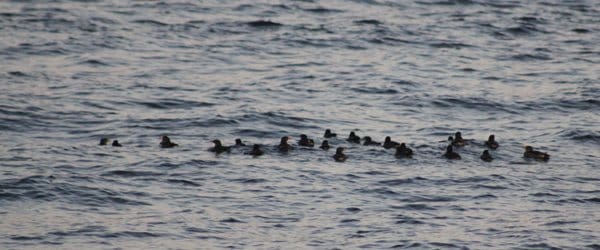
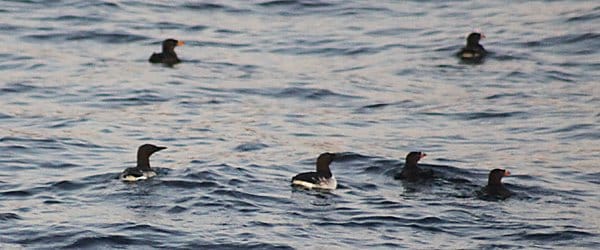
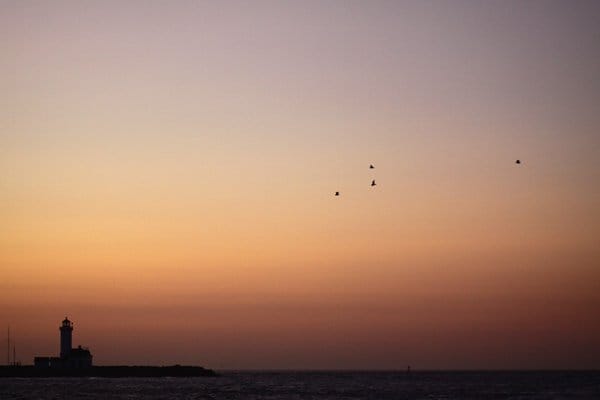











What do you use to drug Daisy into enjoying birds and have there been any side-effects? You could get rich man, really rich!
And without analysis, just “gut feeling”, could that mystery gull be a Mew?
Next time try to talk her into a cruise to St Paul Island. Nice island somewhere in the Pacific. How could she refuse?
@Jochen: No drugs…just the amazing effect of puffins! And there was an adult Mew Gull or two around so your identification might very well be correct.
@Laurent: That sounds like a brilliant plan!
Laurent suggests St. Paul Island. I would agree, but no way you are going there on a family vacation and I don’t think there are any cruises around the island. In the middle of the Bering Sea, the Pribilofs are a great place to see both Tufted and Horned Puffins and much more including vagrants from Russia.
Very nice. Lots of birds that used to bite me and cover me in guano. You do realize you saw 2 puffin species, right?
The atlantic puffins seem more puffy to me.
No drugs, just puffins?
I am not buying it.
Corey, thanks so much for the great write up! We have an opportunity to do this cruise later this summer, and I appreciate knowing what to expect. Any rough waters/sea sickness issues that time of year?
@Ingrid: We had no issues at all. It was smooth sailing, even for a 20-month-old.